Decision Trees are simple proagrams consisting of:
- A nested sequence of “if-else” decisions (splitting rules)
- A class lable as return value
Example:

Decision Stump
Decision Stump – A simple decision tree with 1 splitting rule based on 1 feature. Below is the sample of a decision stump:
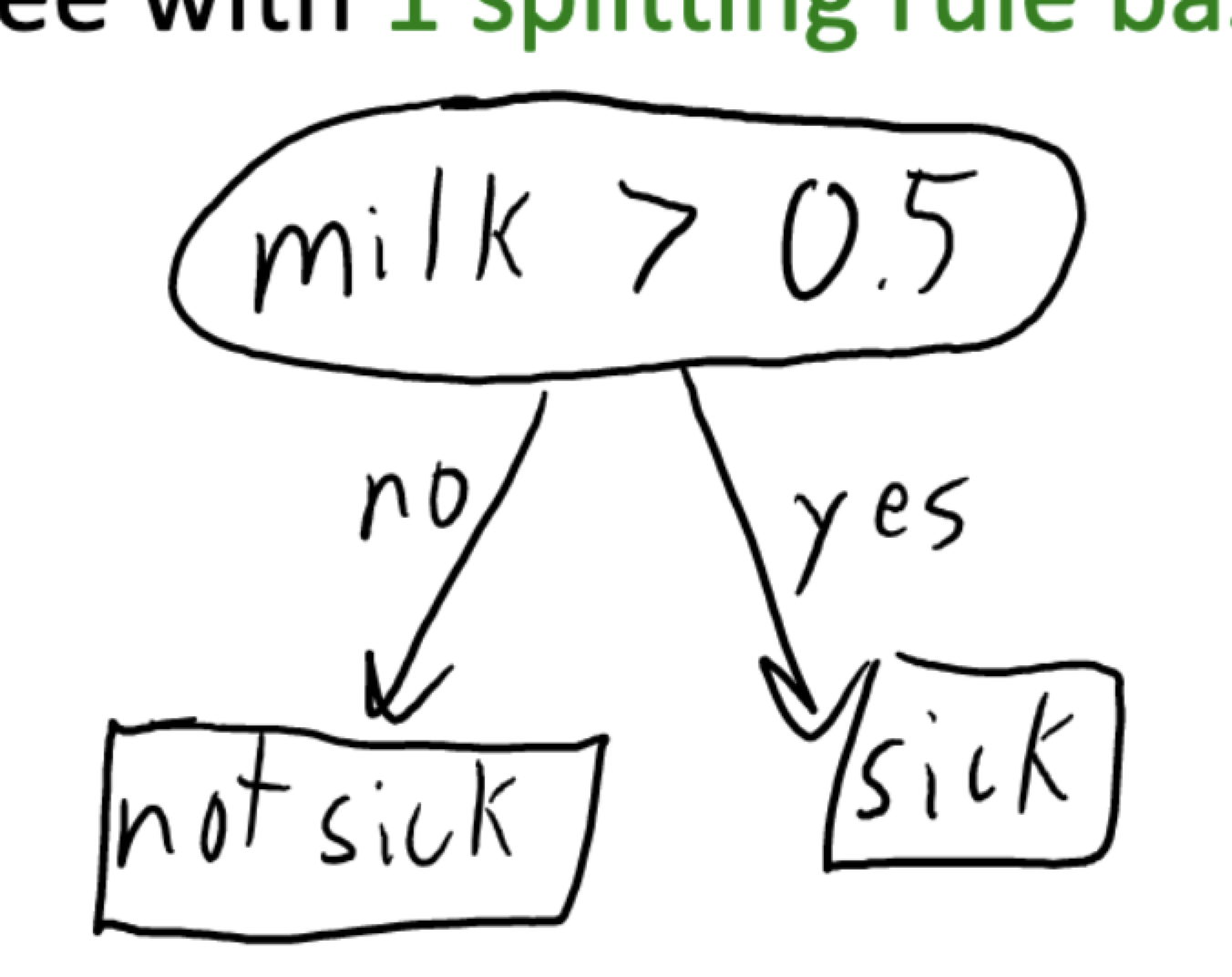
To learn a decision stump, we need to find 3 things:
- which feature we should use to split data
- what value should be used as threshold
- what classes should we used for the leaves
Accuracy Score
To find out the best rule, we should define a score for each rule
The most intuitive score is classification accuray – if we use this rule, how many examples do we labe correctly?
| Milk | Fish | Egg | Sick? |
|---|---|---|---|
| 0.7 | 0 | 1 | 1 |
| 0.7 | 0 | 2 | 1 |
| 0 | 0 | 0 | 0 |
| 0.7 | 1.2 | 0 | 0 |
| 0 | 1.2 | 2 | 1 |
| 0 | 0 | 0 | 0 |
If we use below decision stump:
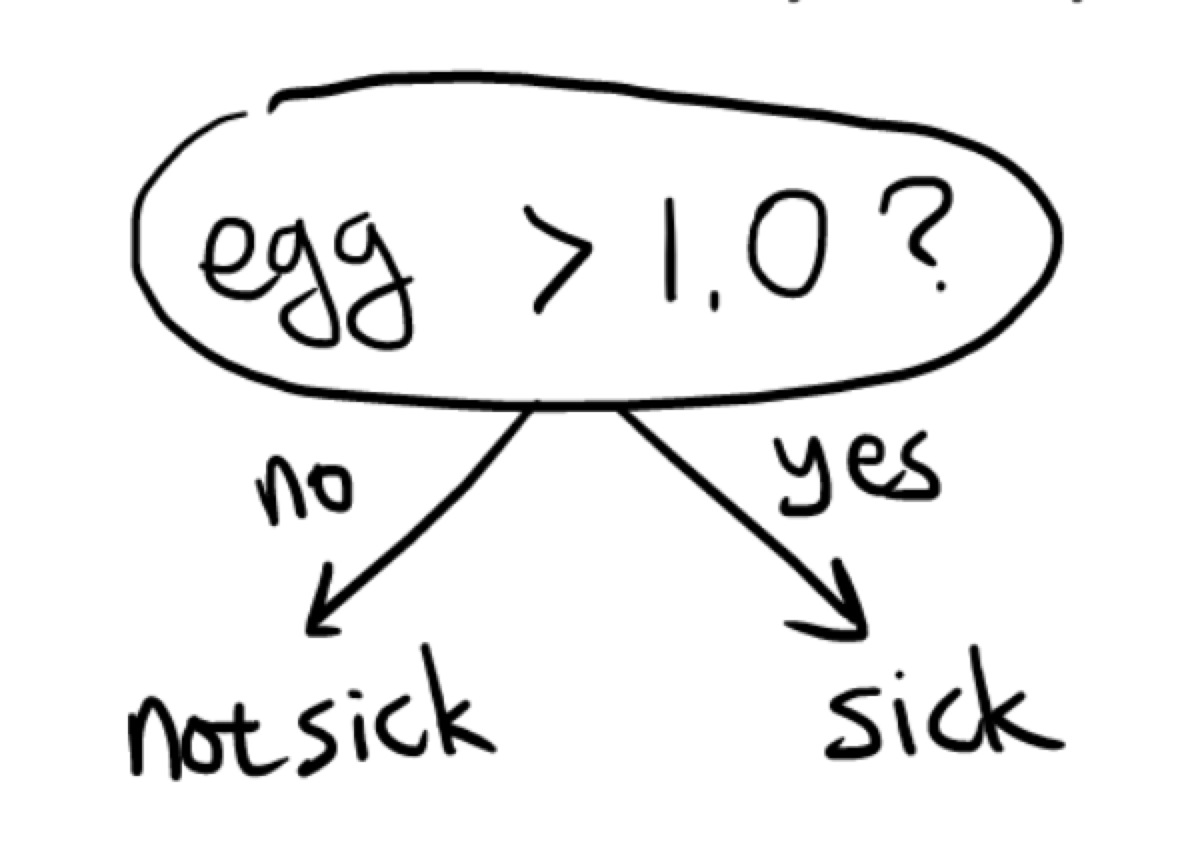
While egg > 1, sick: 2/2
egg <=1, not sick: 3/4
Accuracy: 5/6
We “learn” a decision stump by finding rule with the best score
Decision Stump Learning Pseudo-Code
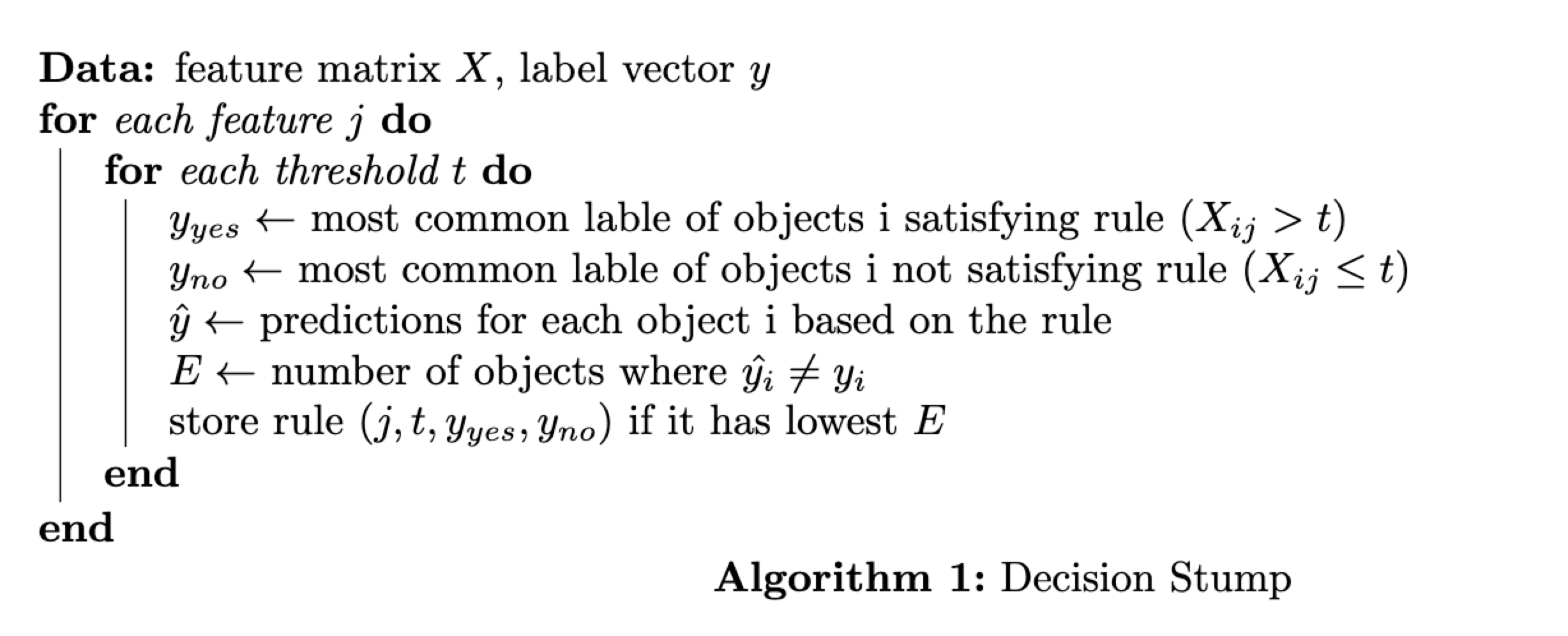
Implementation
Cost
- n examples
- d features
- k threshholds (>0, >1, >2, …) for each feature
We have $O(dk)$ rules, and for each rule, we should go through n examples to find most common labels, then go through n examples again to compute the accuracy.
So the total cost is $O(ndk)$
If the features are binary, which means k =1, then the cost is $O(nd)$
However if features are numerical, then k = n, the cost is $O(n^2d)$
Decision Trees
Decision Stump VS Decison Trees
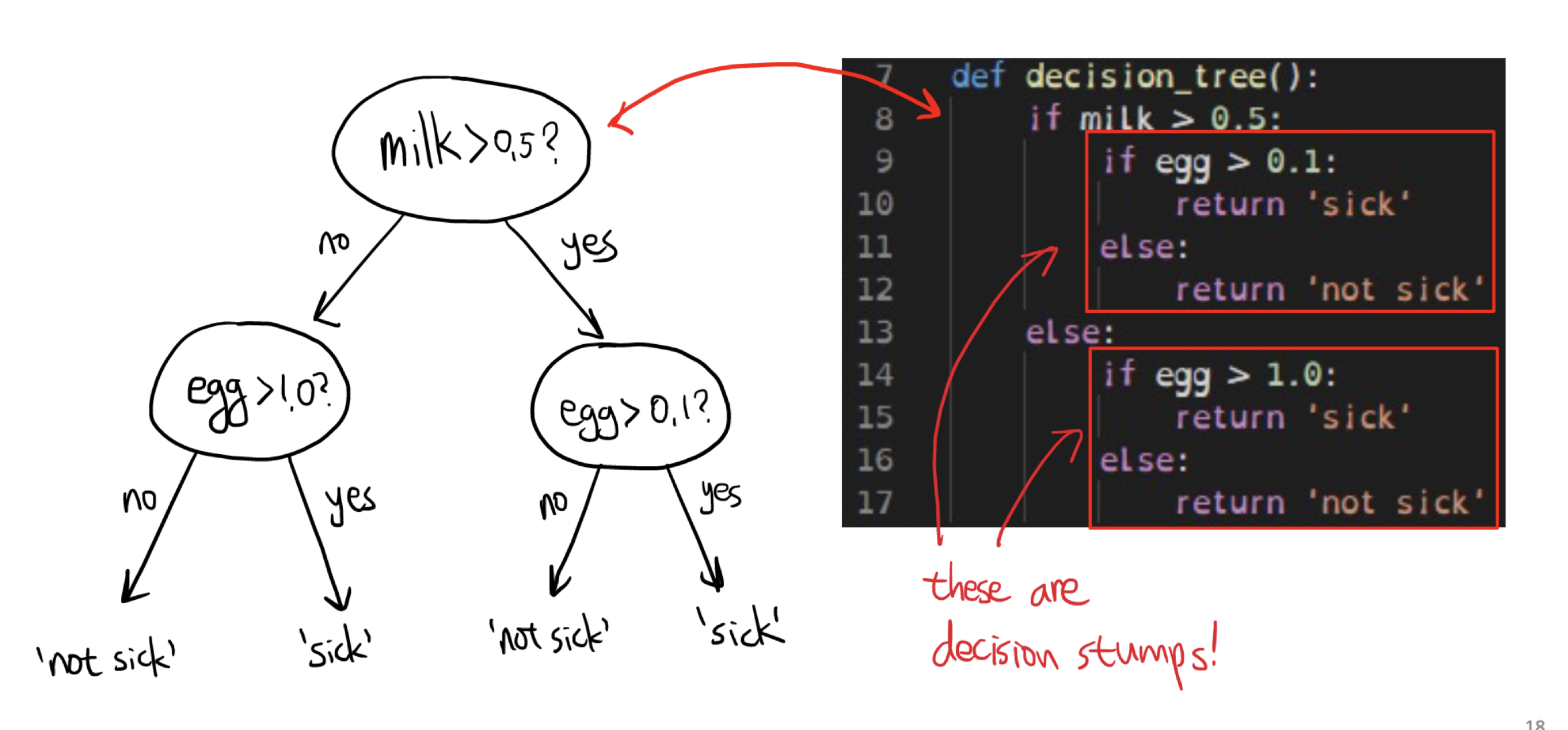
Decsion stumps have only one rule based on one feature, decision trees allow sequence of splits based on multiple features.
Decision Tree Learning - Greedy Recursive Splitting
-
Start with a full dataset, find the decision stump with the best score, split into 2 smaller datasets based on the stump.
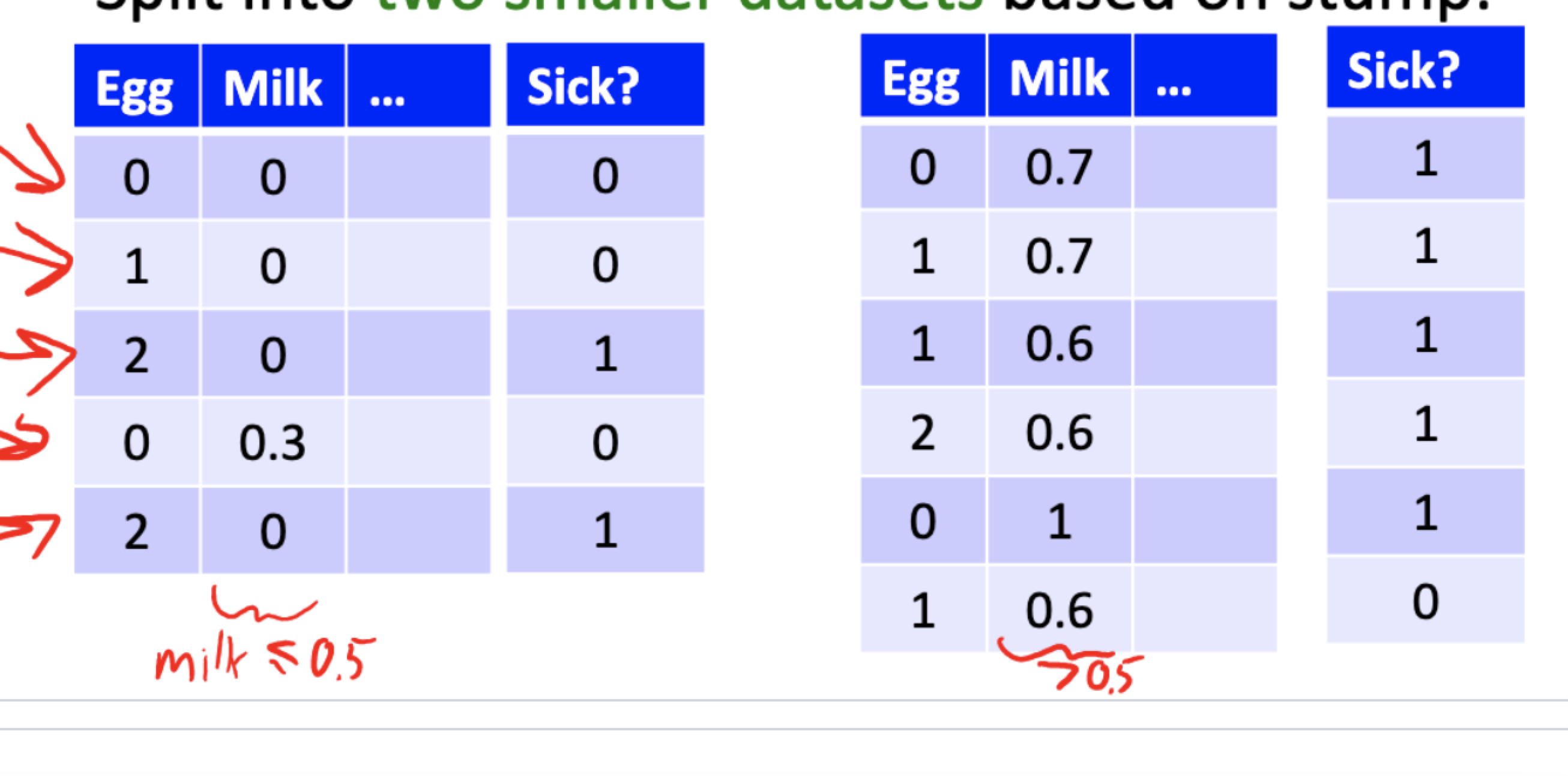
-
Now we have a decision stump and 2 sub-datasets. Fit a decision stump to each leaf’s data. And add these stumps to the tree
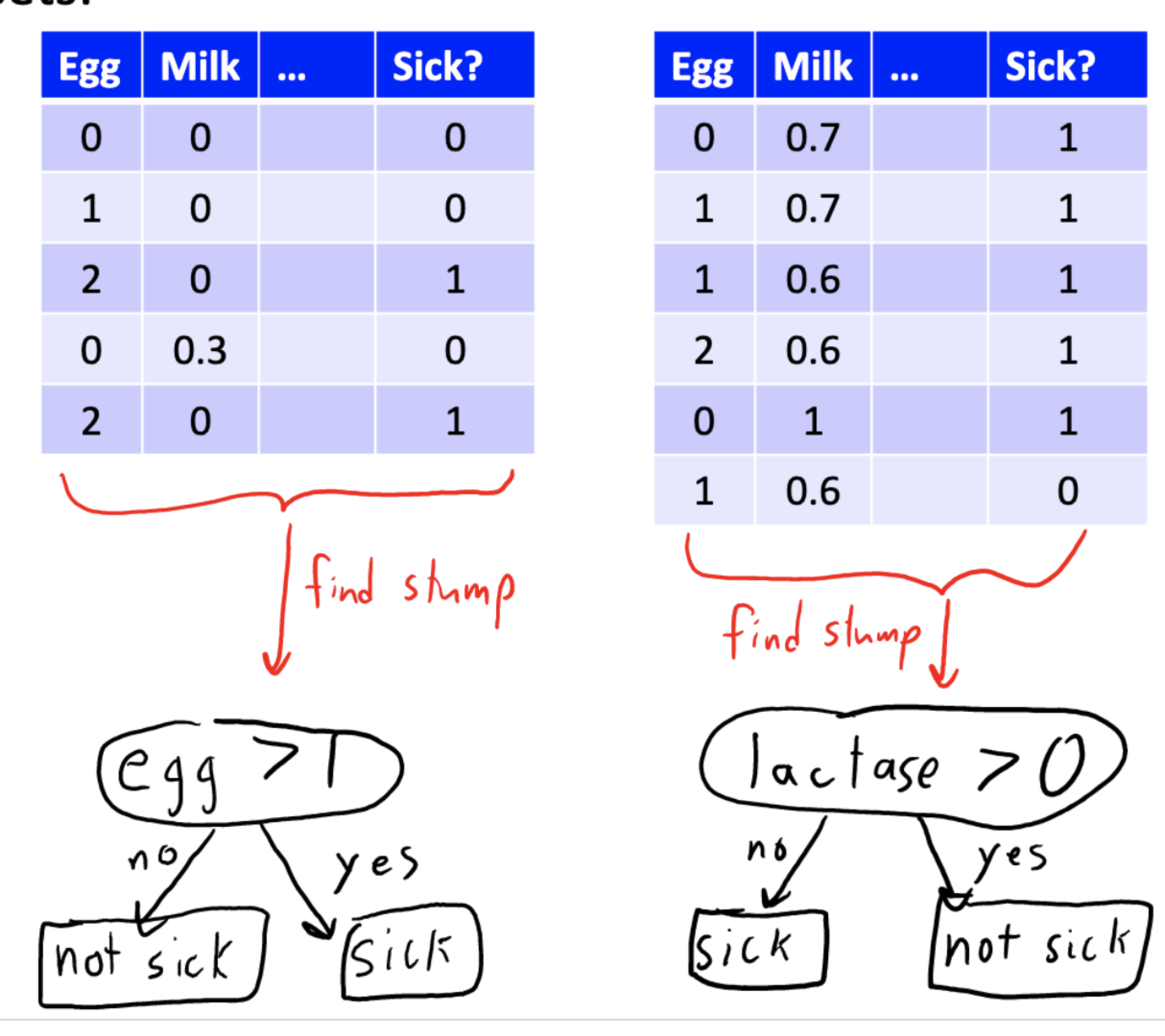
After adding stumps to the tree, we have a decision tree with depth 2:
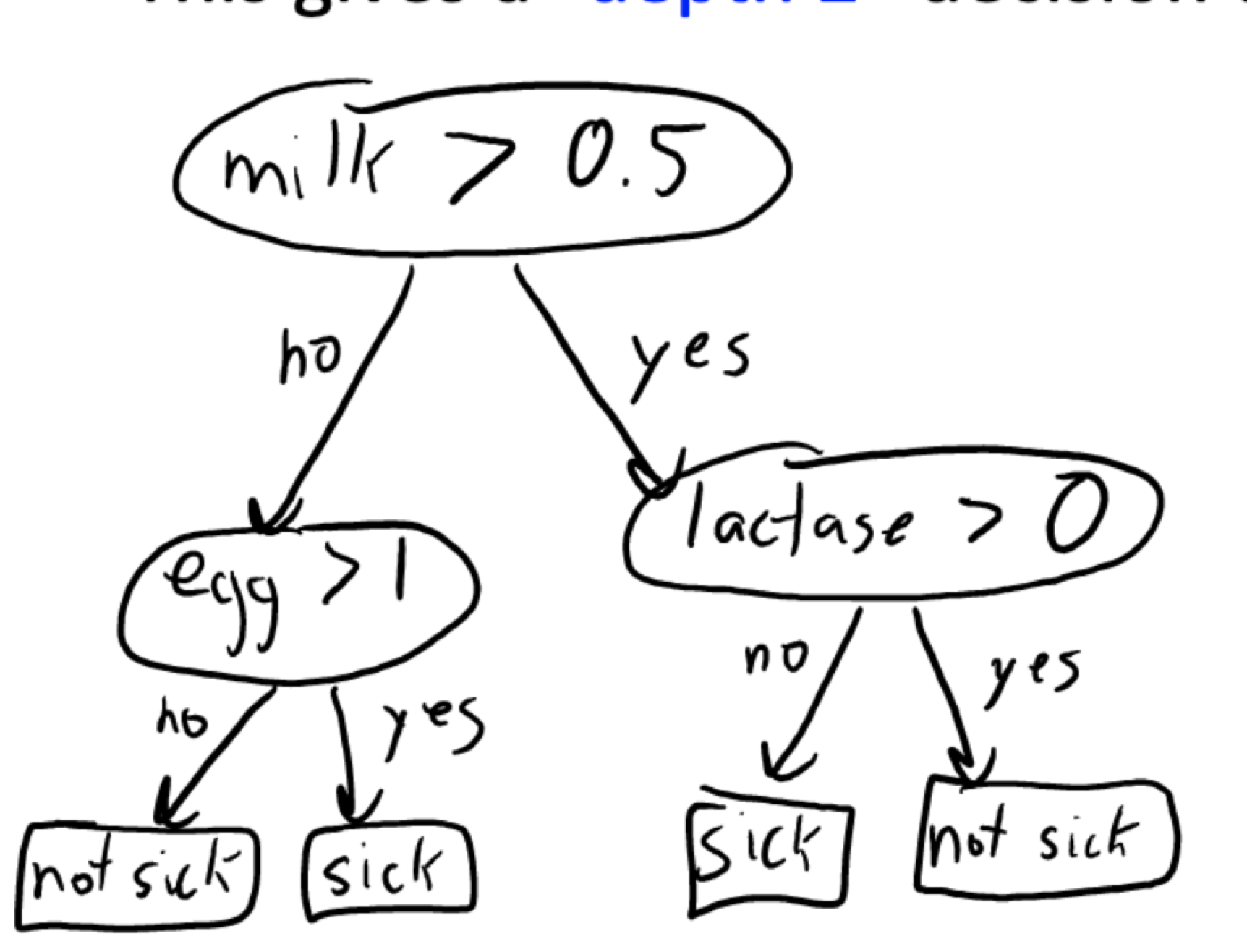
It divide the original dataset as below subsets:

We might continue splitting until:
- the leaves each has only one label.
- we reach the defined maximum depth.
Score Function
We cannot use accuracy score:
for leafs: yes, just maximize accuracy
for internal nodes: not necessary
and maybe no simple rule like (egg >0.5) improves accuracy, but we should not stop.
(Example where accuracy fails can be found in the slides)
We can use the “information gain” as score function: choose split that decreases entropy of labels the most:
$information \space gain = entropy(y) - \frac{n_{yes}}{n}entropy(y_{yes}) - \frac{n_{no}}{n}entropy(y_{no})$
Infogain is large if labels are “more predictable” next layer.
Entropy Function
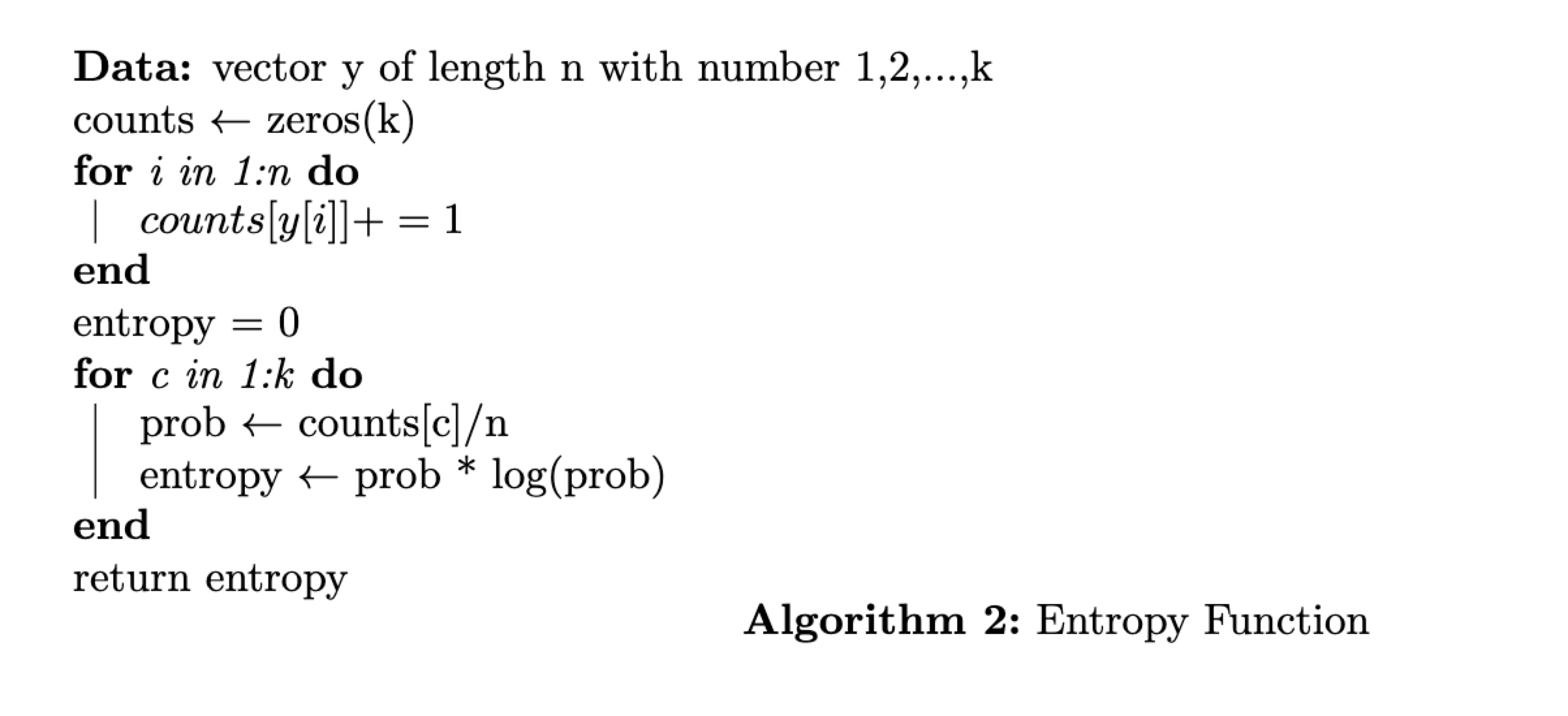
Code Implementation
We should use infogain as the score function.
1
2
3
4
5
6
7
8
9
10
11
12
13
14
15
16
17
18
19
20
21
22
23
24
25
26
27
28
29
30
31
32
33
34
35
36
37
38
39
40
41
42
43
44
45
class DecisionStumpInfoGain(DecisionStumpErrorRate):
y_hat_yes = None
y_hat_no = None
j_best = None
t_best = None
def fit(self, X, y):
n, d = X.shape
class_count = np.unique(y).size
self.y_hat_yes = utils.mode(y)
# If all ys are the same
if (class_count == 1):
return
p = np.bincount(y, minlength = class_count) / n
prev_entropy = entropy(p)
maxInfo = 0
for j in range(d):
thresholds = np.unique(X[:, j])
for i in range(0, len(thresholds)):
threshold = thresholds[i]
y_yes = y[X[:, j] > threshold]
p_yes = np.bincount(y_yes, minlength=class_count) / len(y_yes)
y_yes_mode = utils.mode(y_yes)
y_no = y[X[:, j] <= threshold]
p_no = np.bincount(y_no, minlength=class_count) / len(y_no)
y_no_mode = utils.mode(y_no)
# Make prediction
y_pred = y_yes_mode * np.ones(n)
y_pred[X[:, j] <= threshold] = y_no_mode
# score function
new_entropy = len(y_yes) / n * entropy(p_yes) + len(y_no) / n * entropy(p_no)
if prev_entropy - new_entropy > maxInfo:
maxInfo = prev_entropy - new_entropy
self.j_best = j
self.t_best = threshold
self.y_hat_yes = y_yes_mode
self.y_hat_no = y_no_mode
Then split recursively until the designed depth or it has already reached the best.
1
2
3
4
5
6
7
8
9
10
11
12
13
14
15
16
17
18
19
20
21
22
23
24
25
26
27
28
29
30
31
32
33
34
def fit(self, X, y):
# Fits a decision tree using greedy recursive splitting
# Learn a decision stump
stump_model = self.stump_class()
stump_model.fit(X, y)
if self.max_depth <= 1 or stump_model.j_best is None:
# If we have reached the maximum depth or the decision stump does
# nothing, use the decision stump
self.stump_model = stump_model
self.submodel_yes = None
self.submodel_no = None
return
# Fit a decision tree to each split, decreasing maximum depth by 1
j = stump_model.j_best
value = stump_model.t_best
# Find indices of examples in each split
yes = X[:, j] > value
no = X[:, j] <= value
# Fit decision tree to each split
self.stump_model = stump_model
self.submodel_yes = DecisionTree(
self.max_depth - 1, stump_class=self.stump_class
)
self.submodel_yes.fit(X[yes], y[yes])
self.submodel_no = DecisionTree(
self.max_depth - 1, stump_class=self.stump_class
)
self.submodel_no.fit(X[no], y[no])
-
Previous
Substring Problems in Leetcode - Sliding Window -
Next
CPSC340 Training Error VS Testing Error VS Validation Error